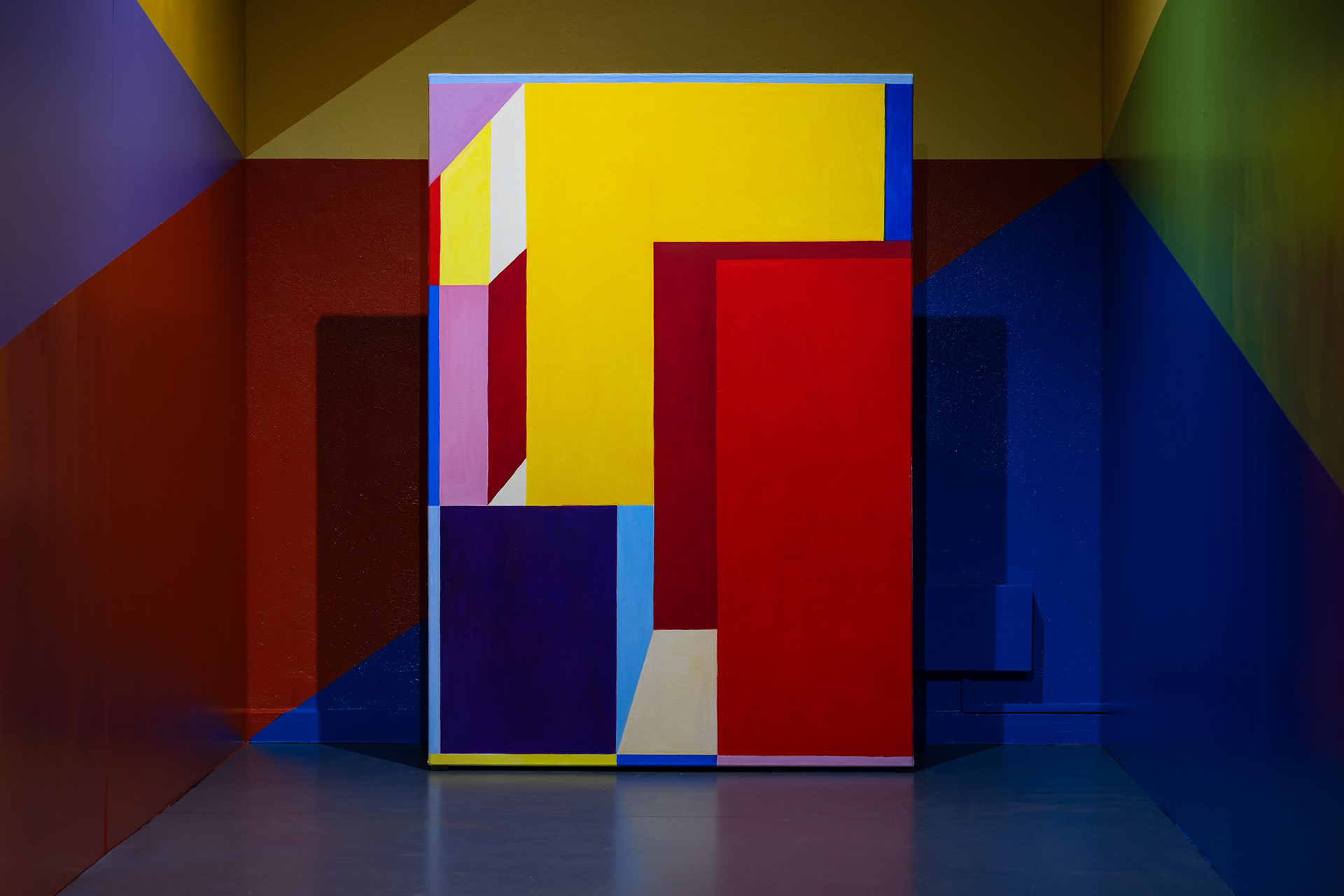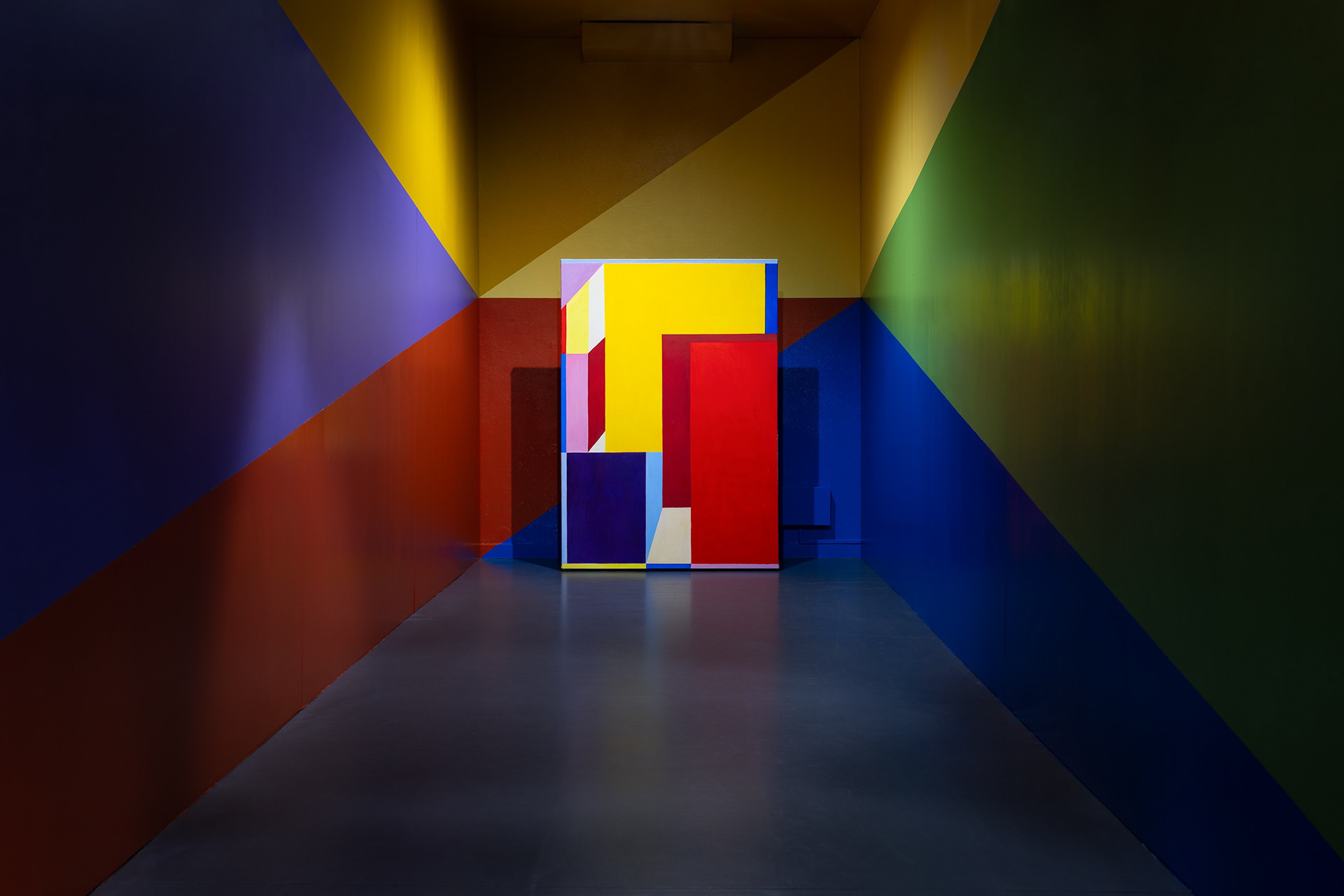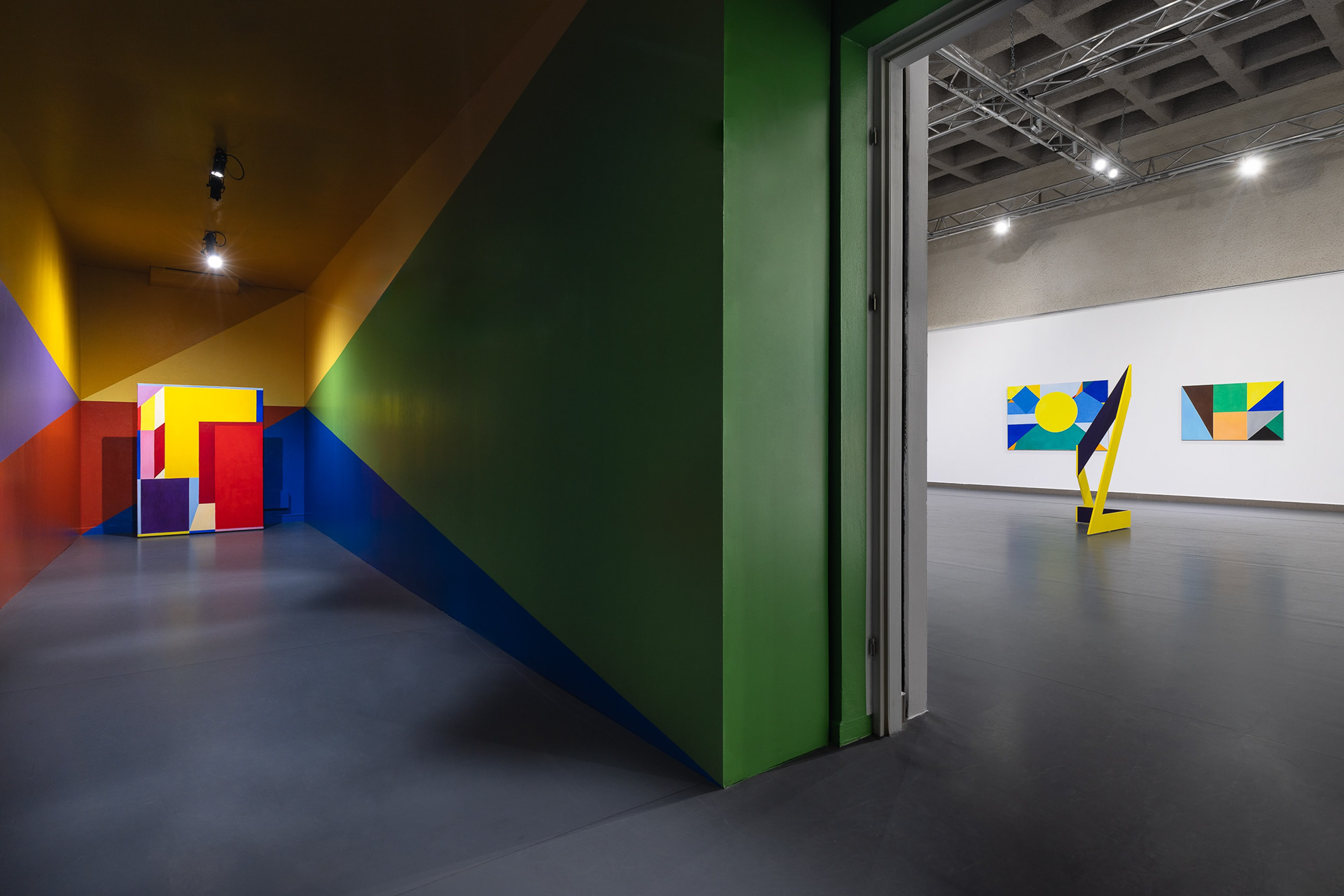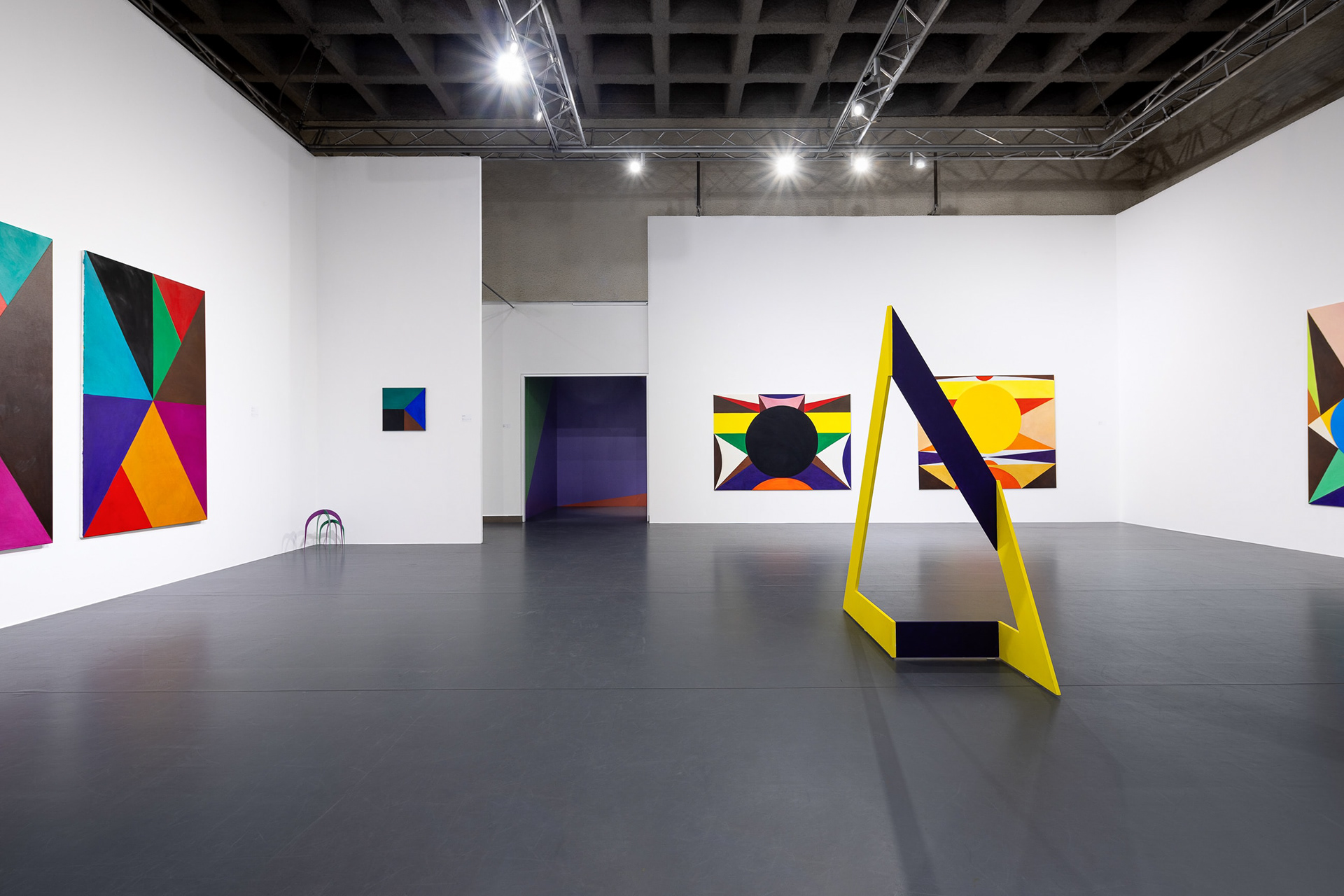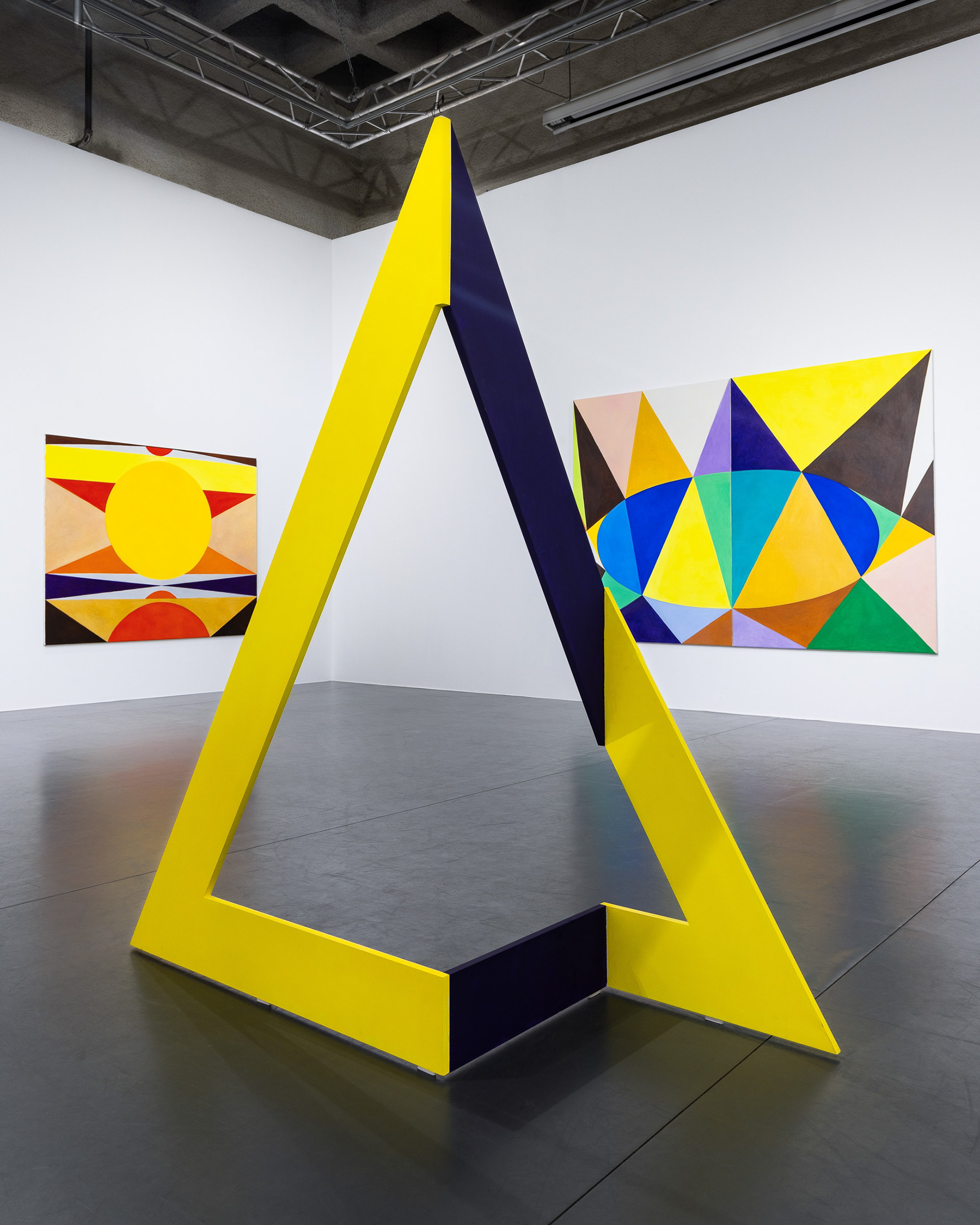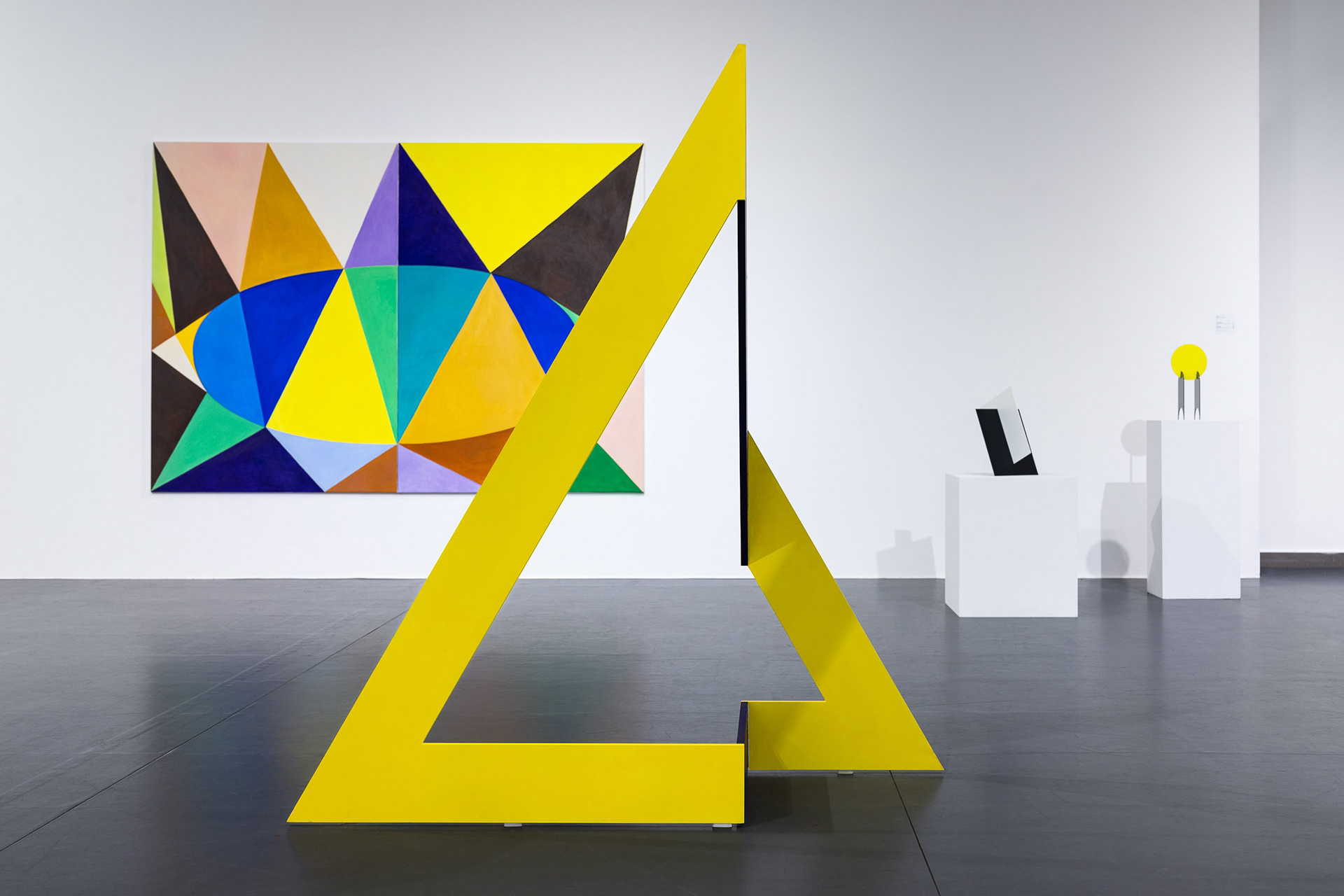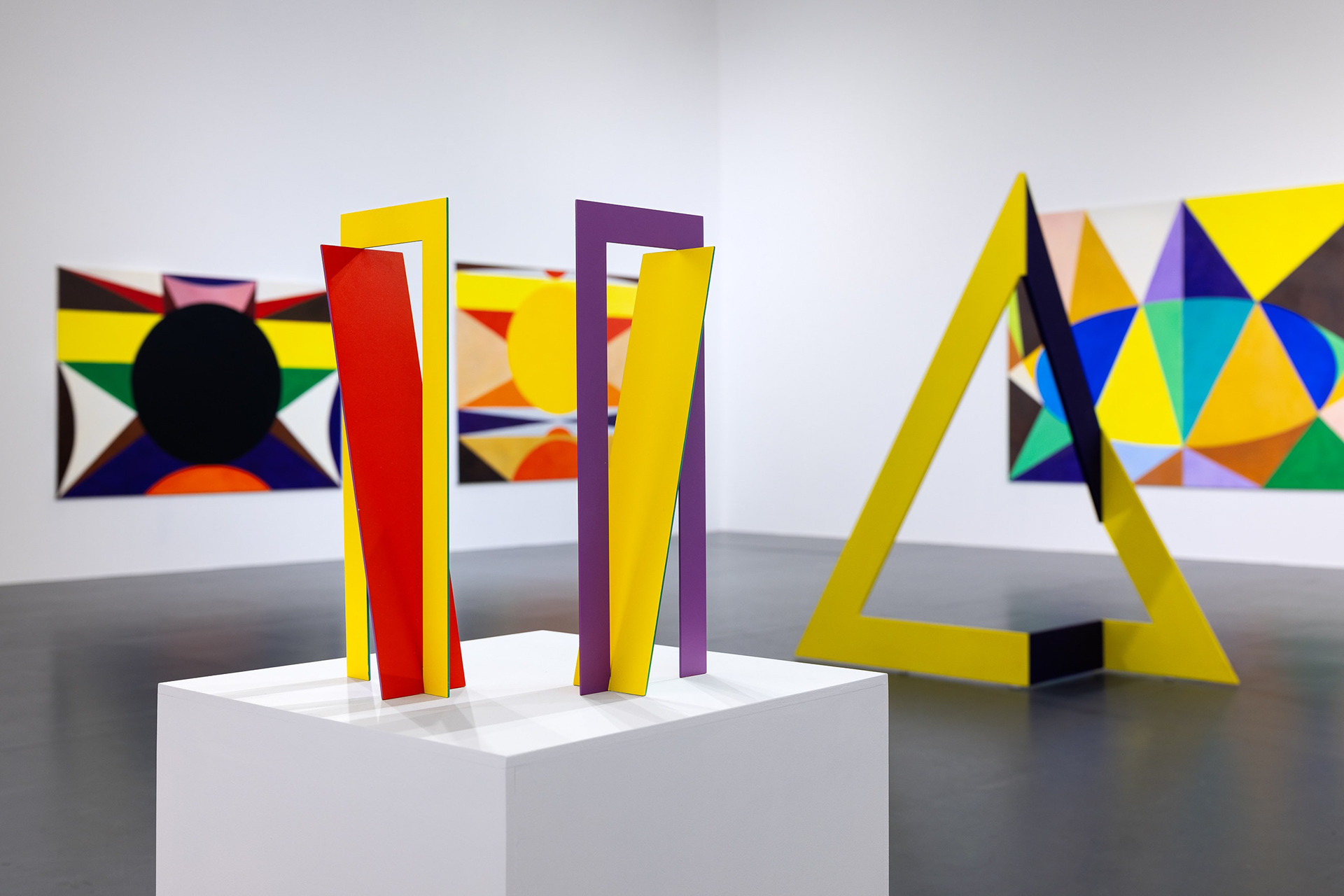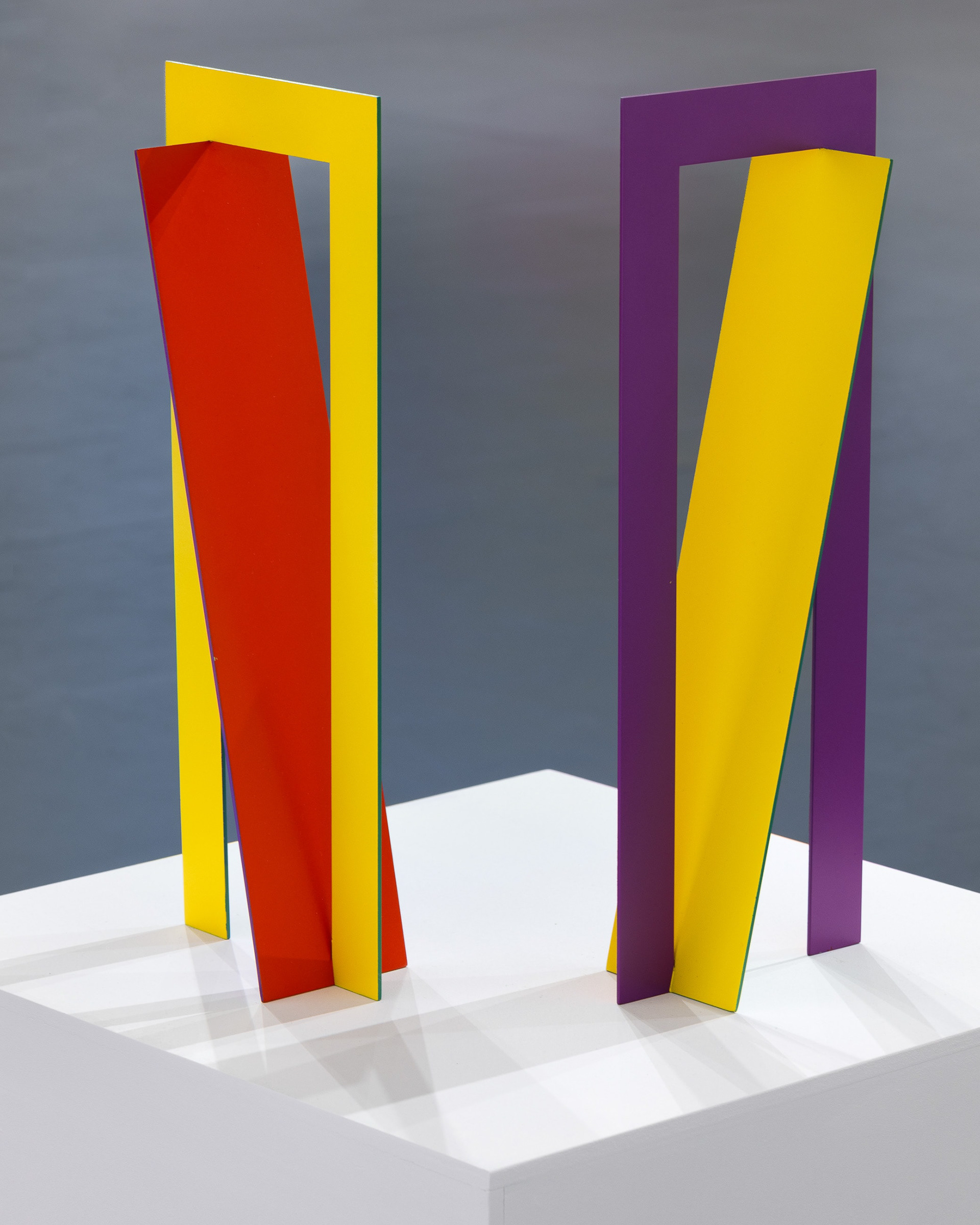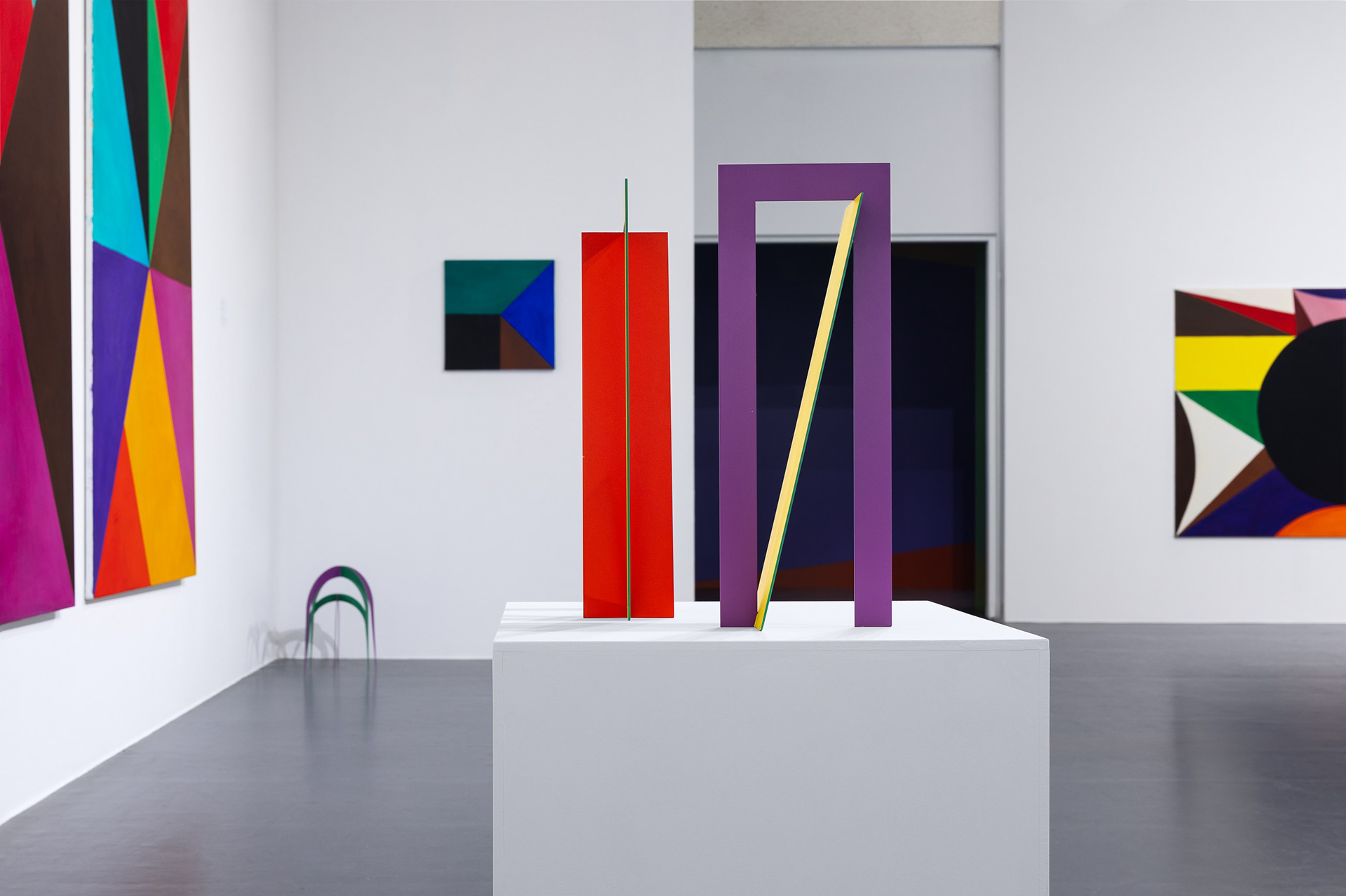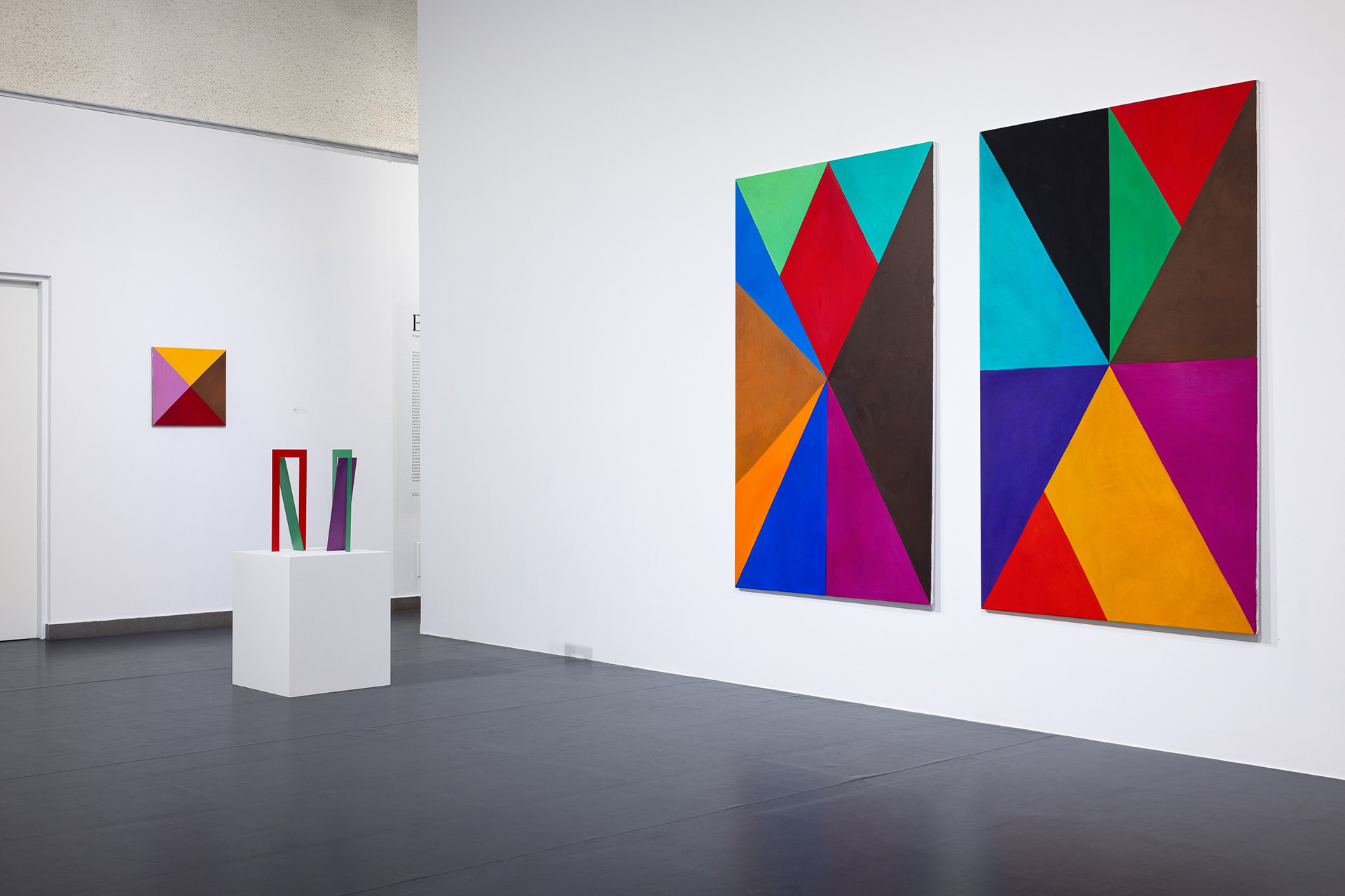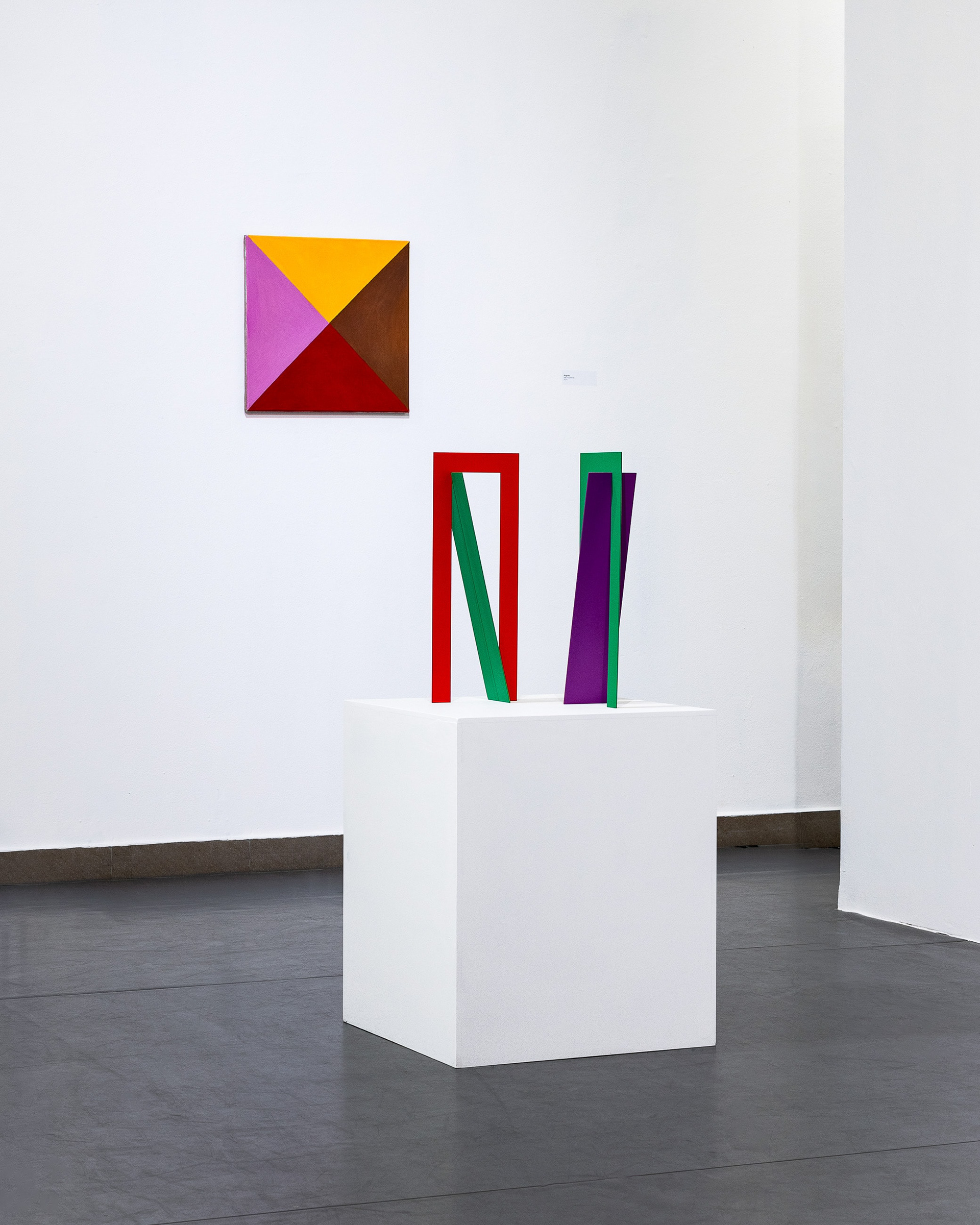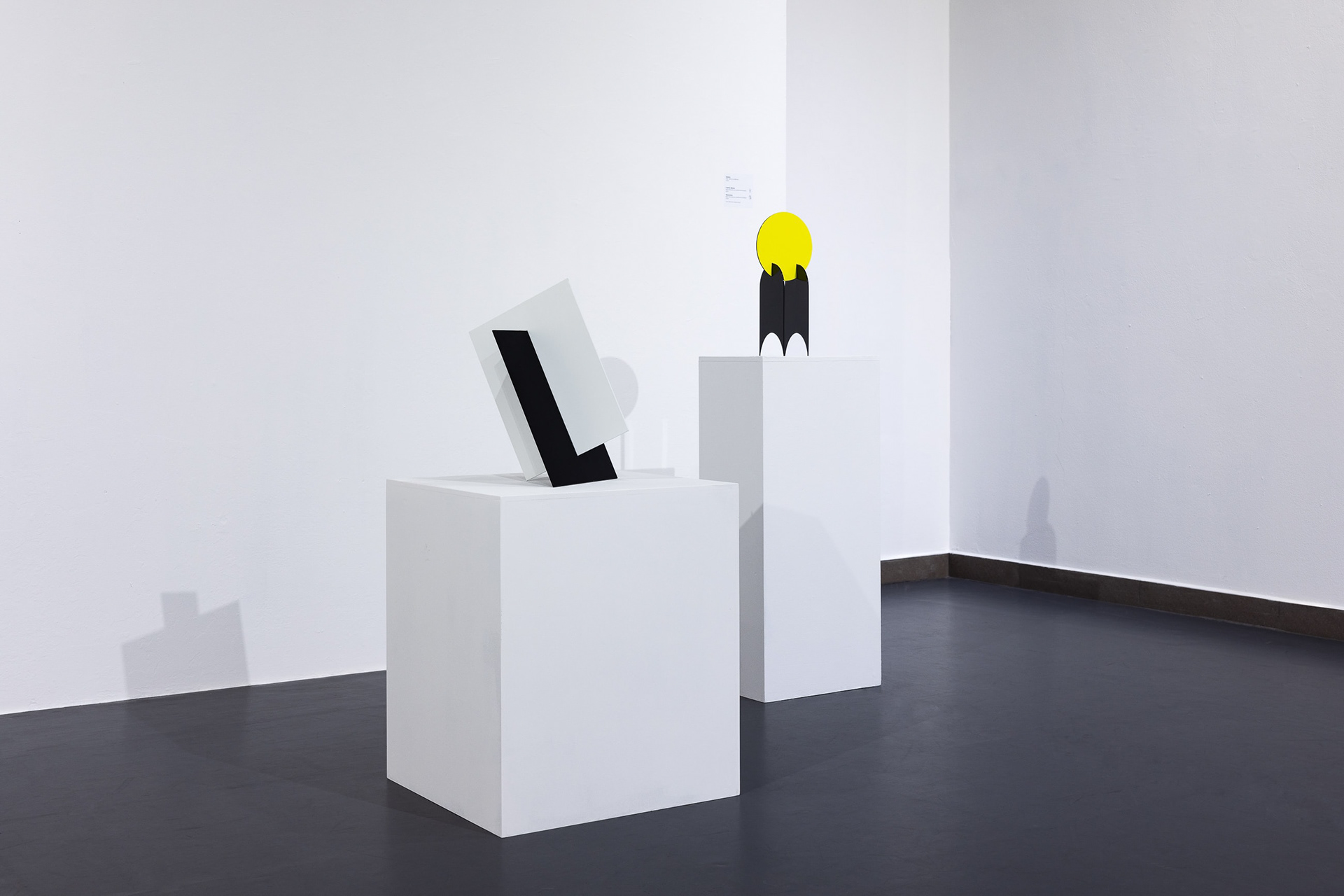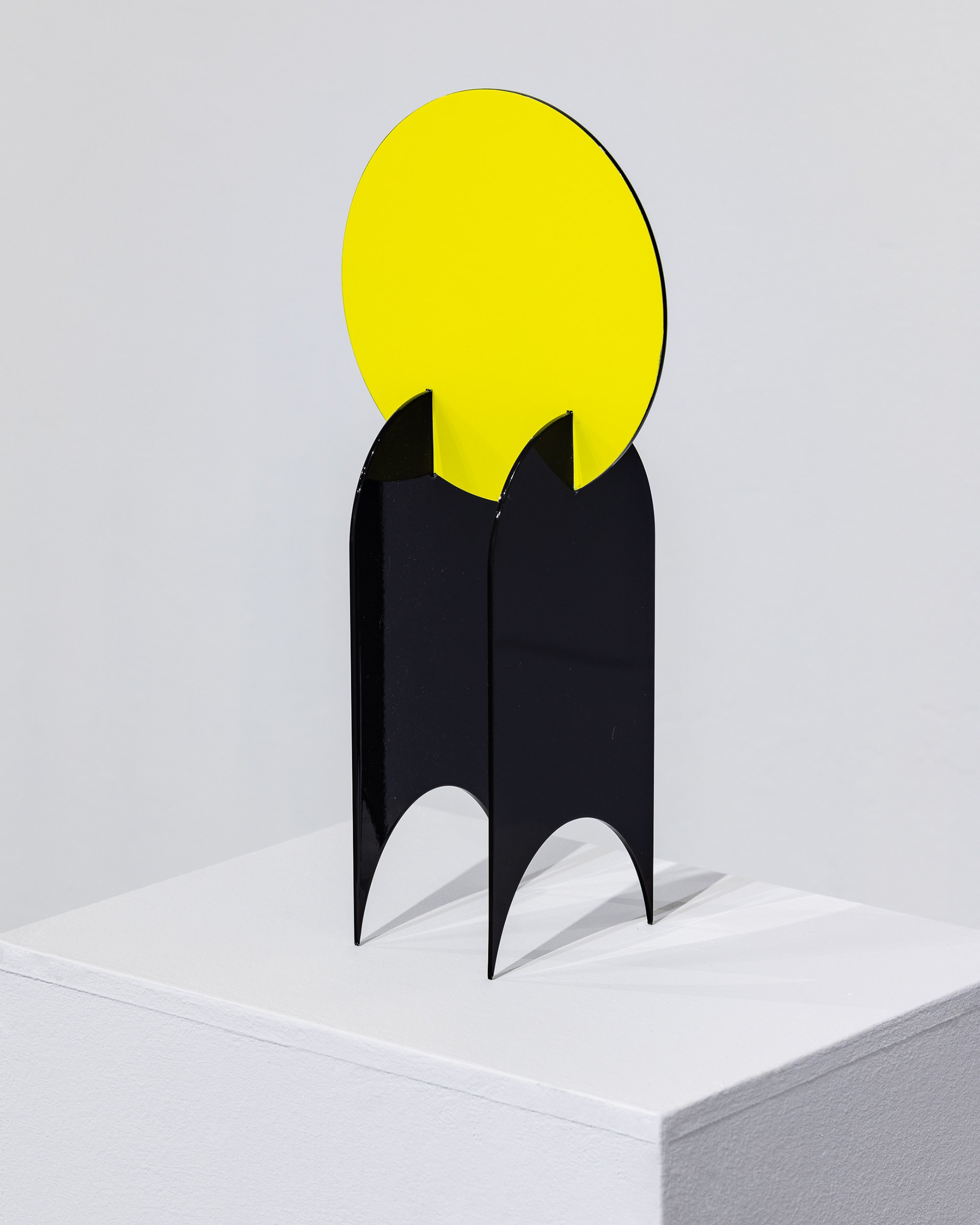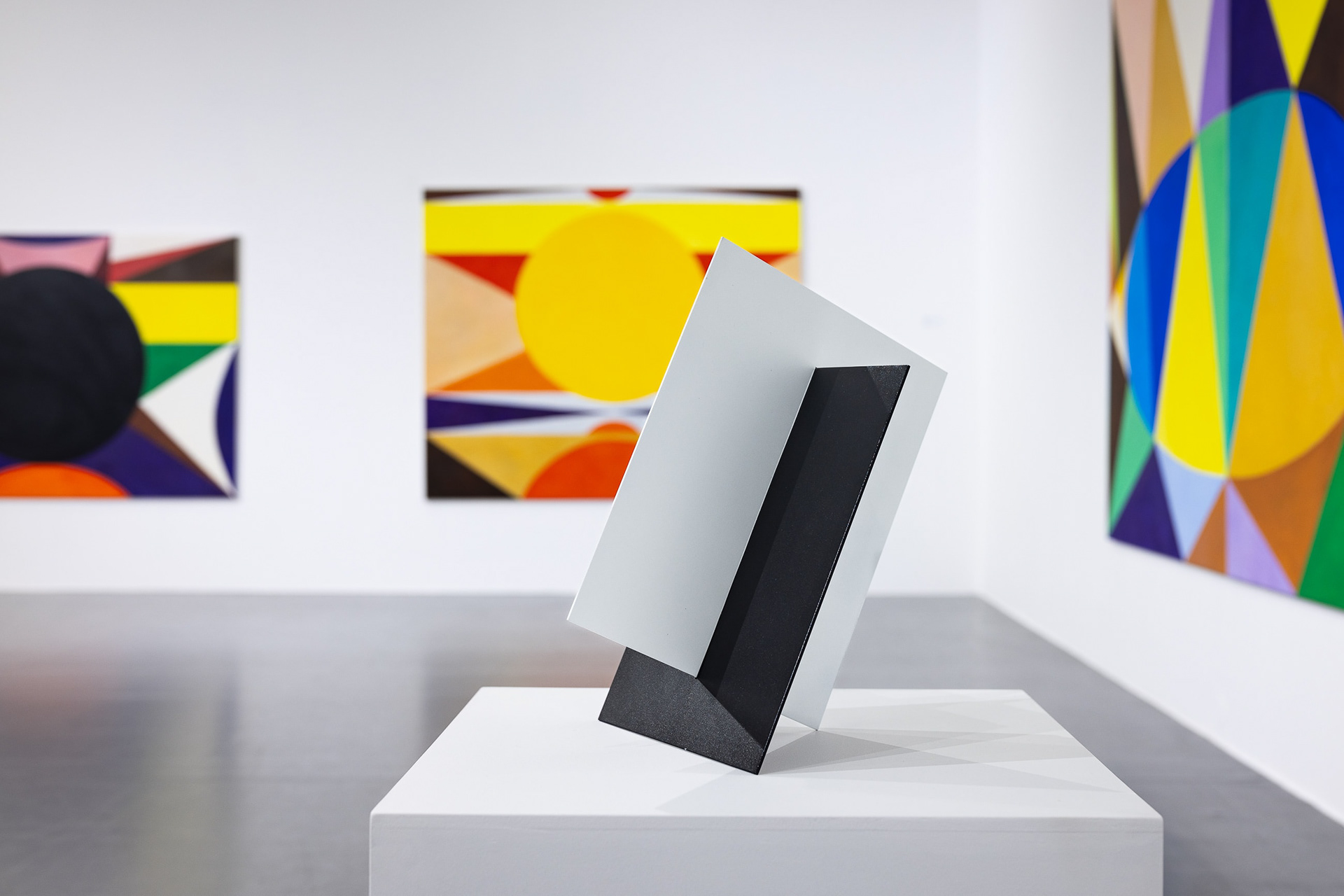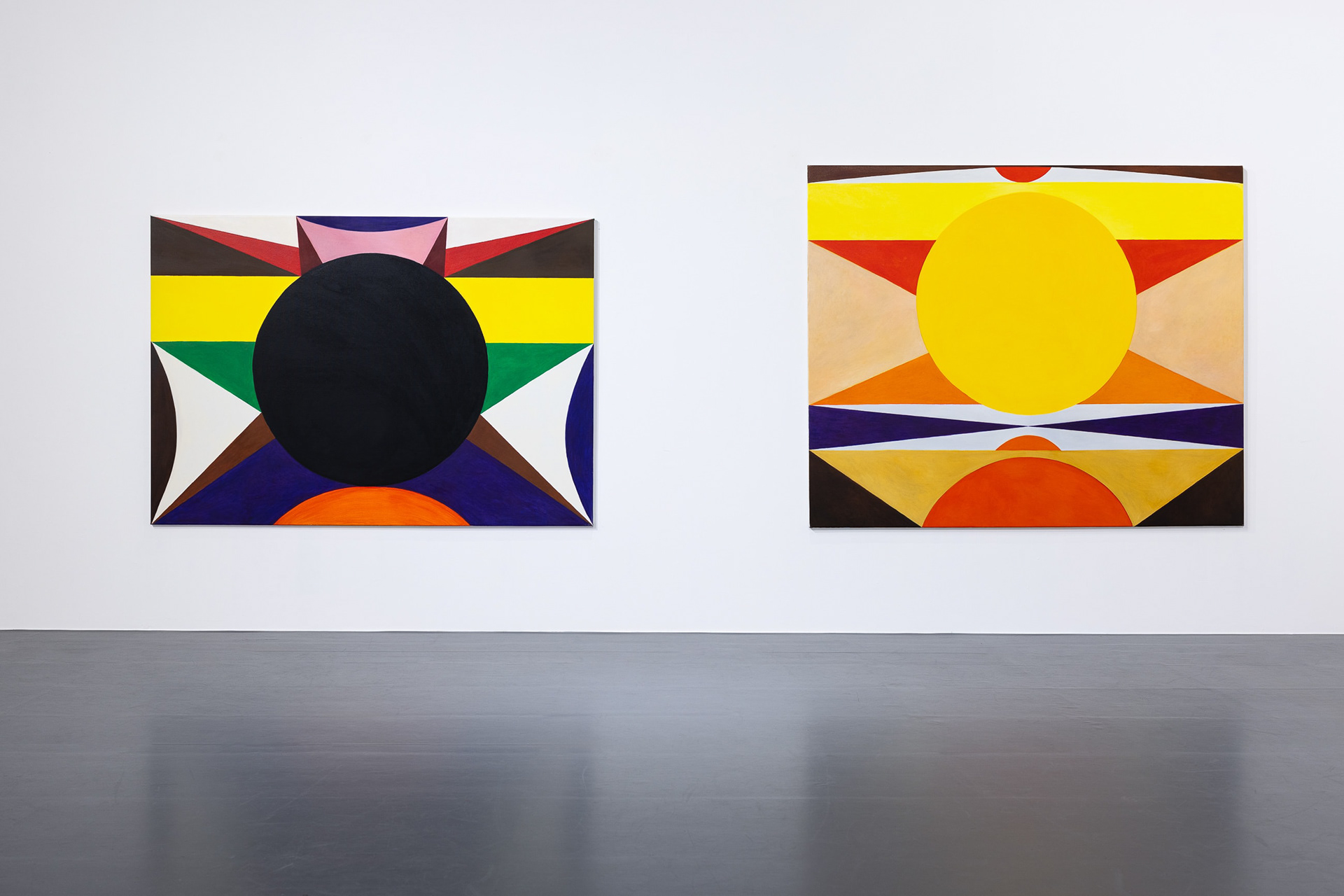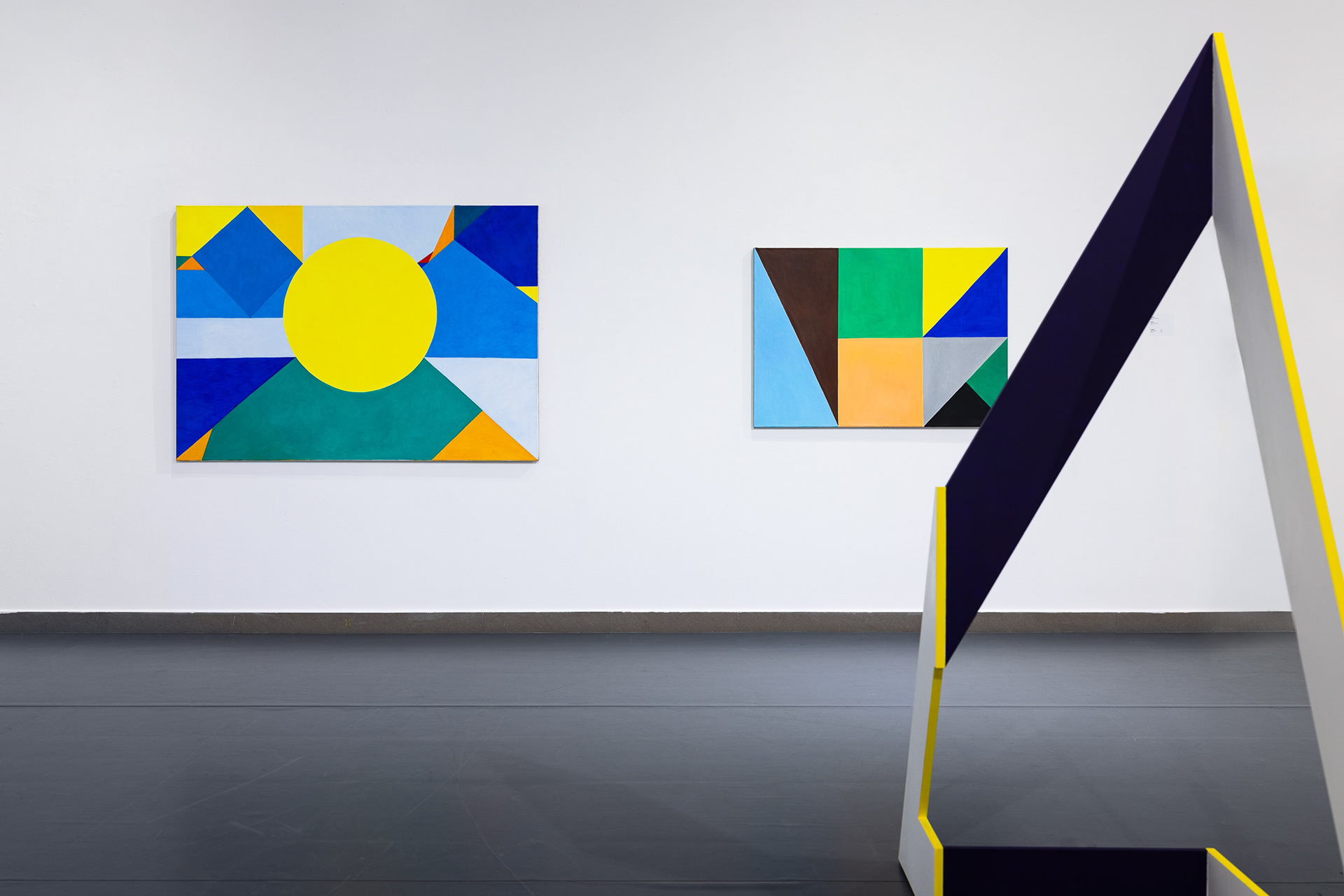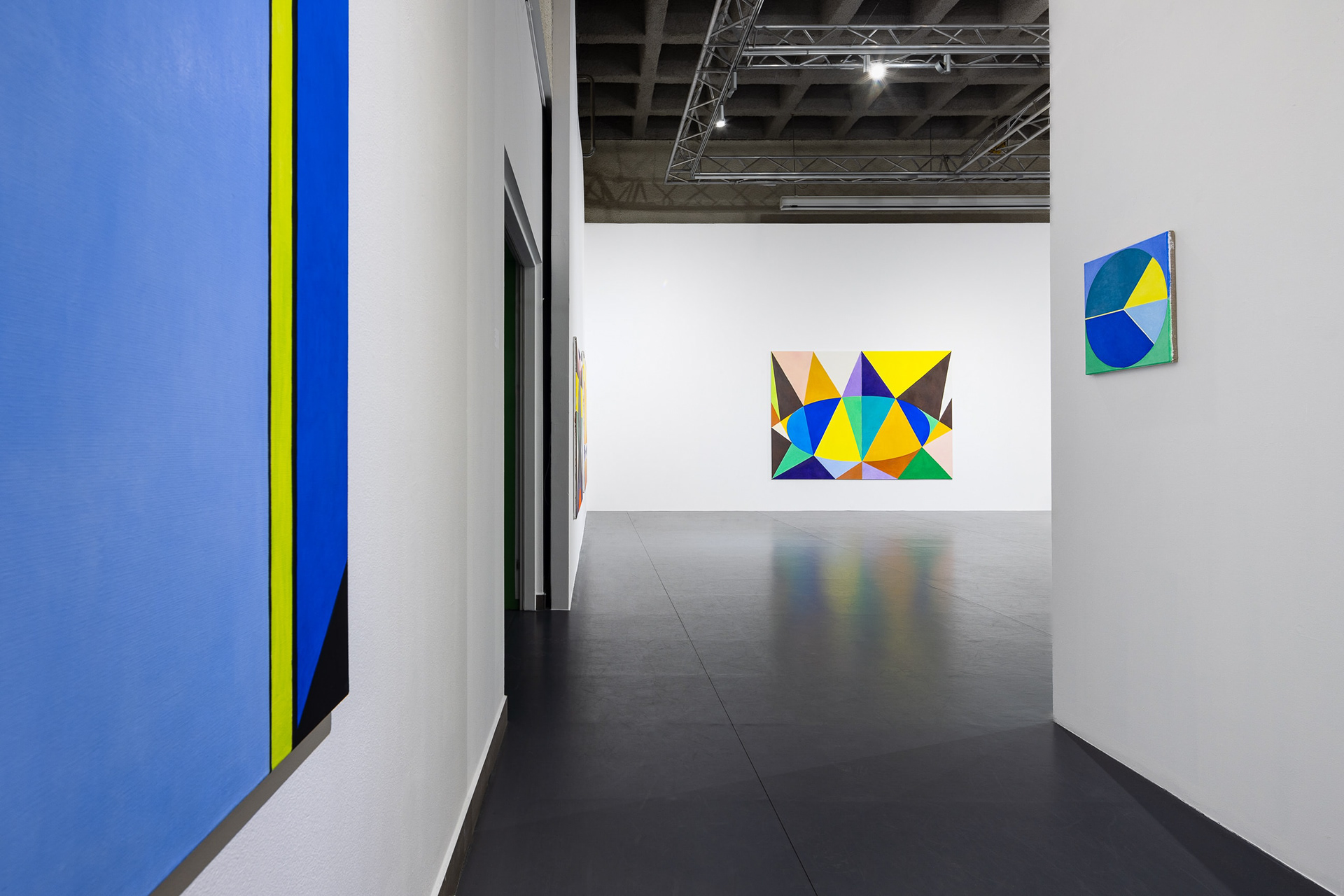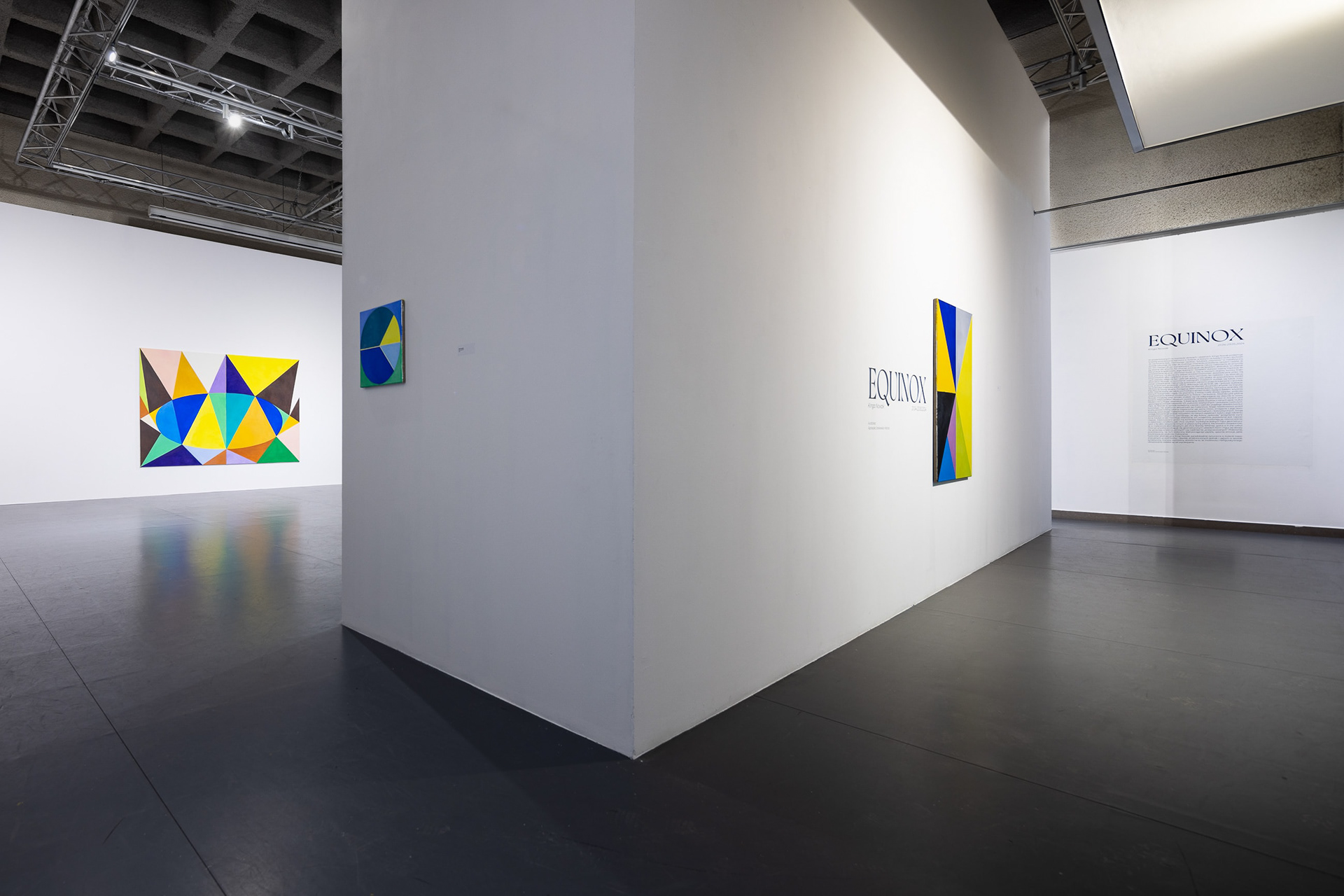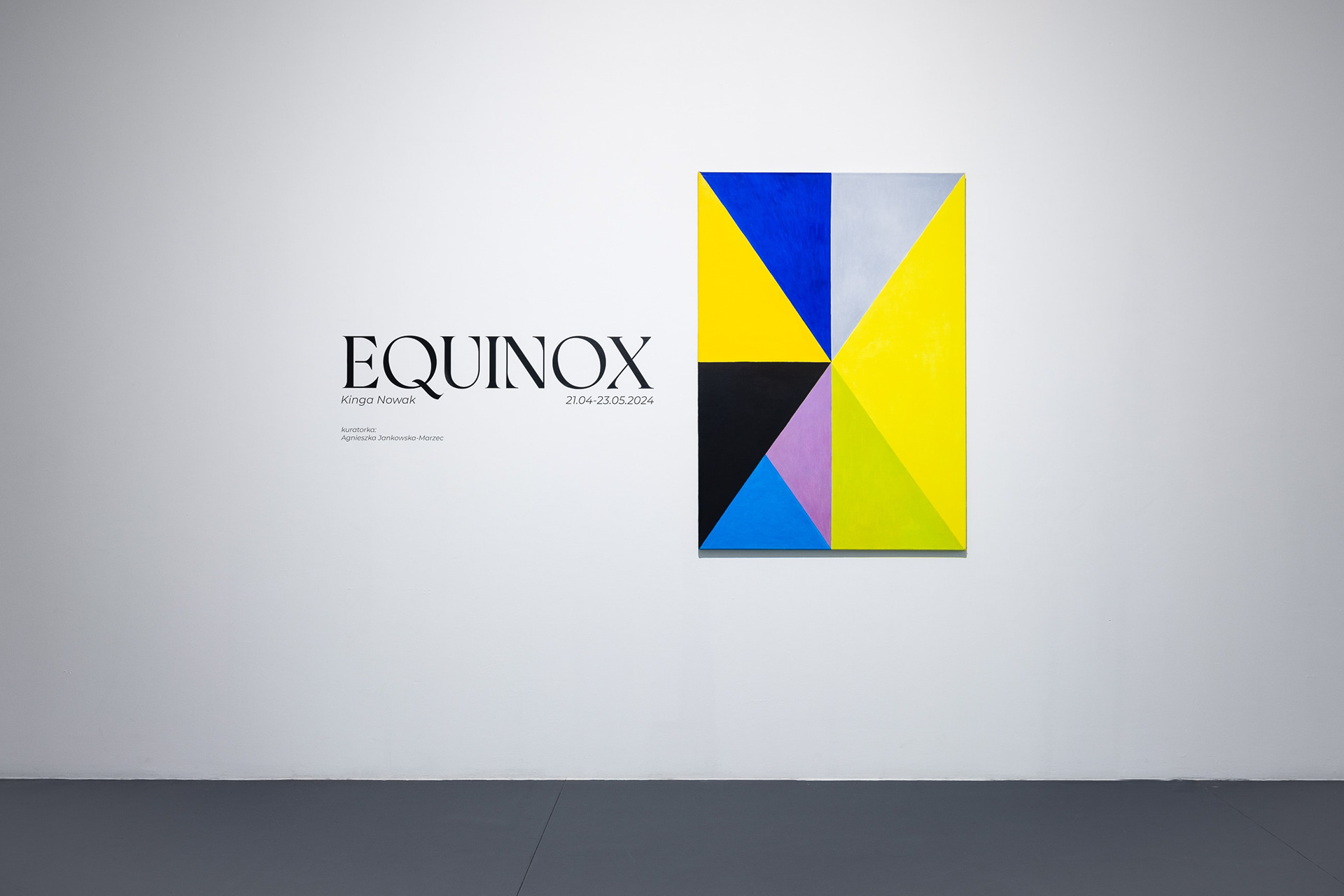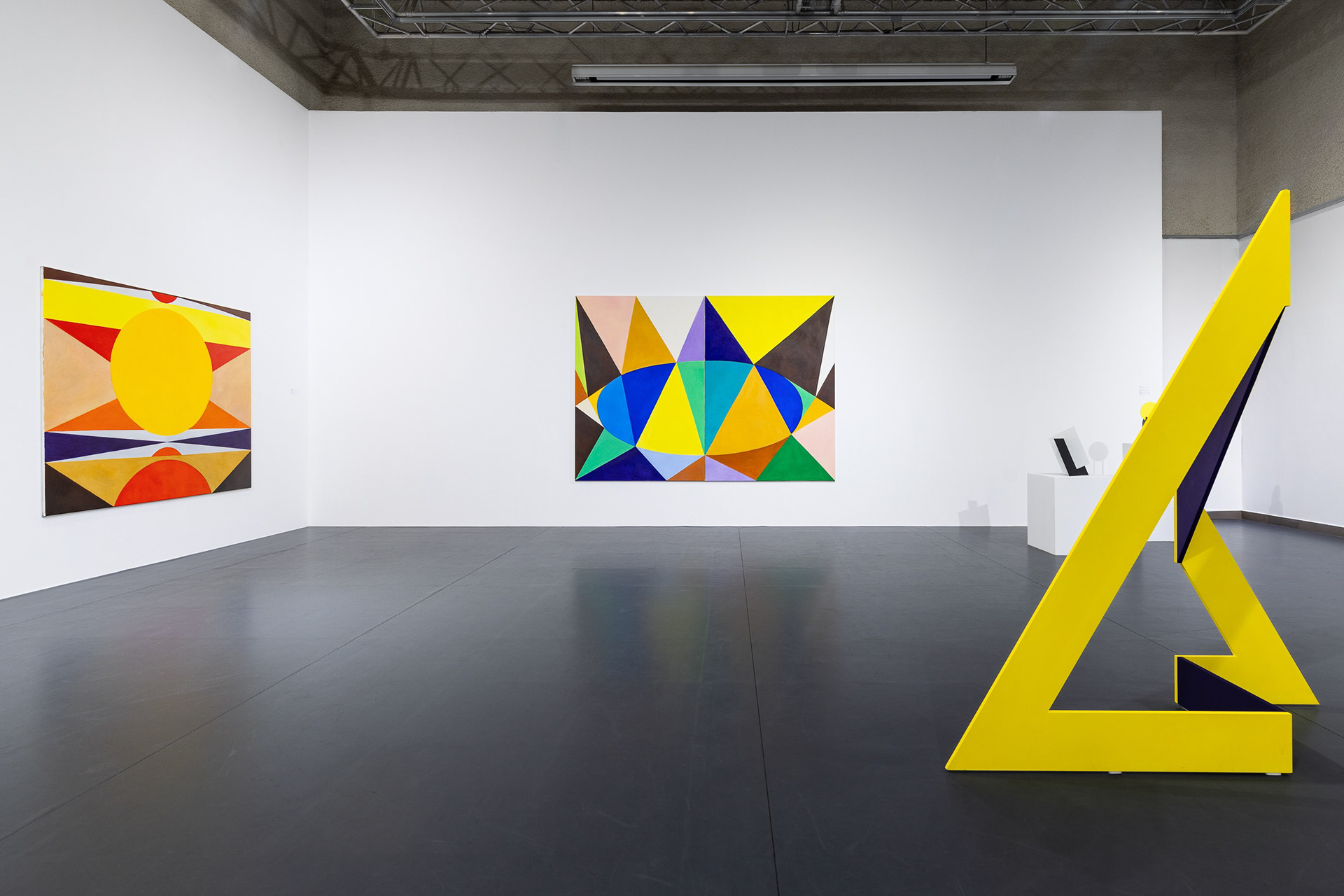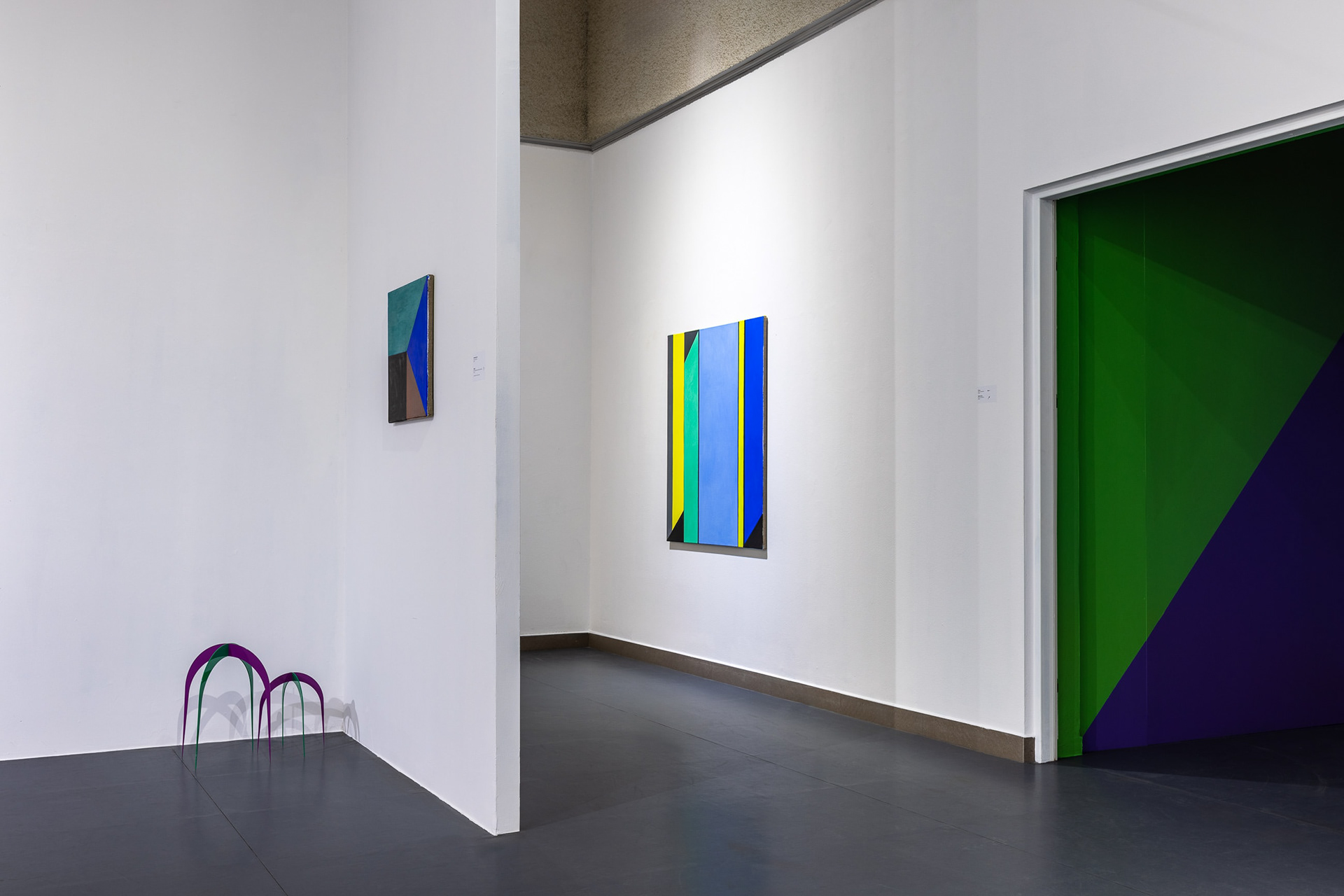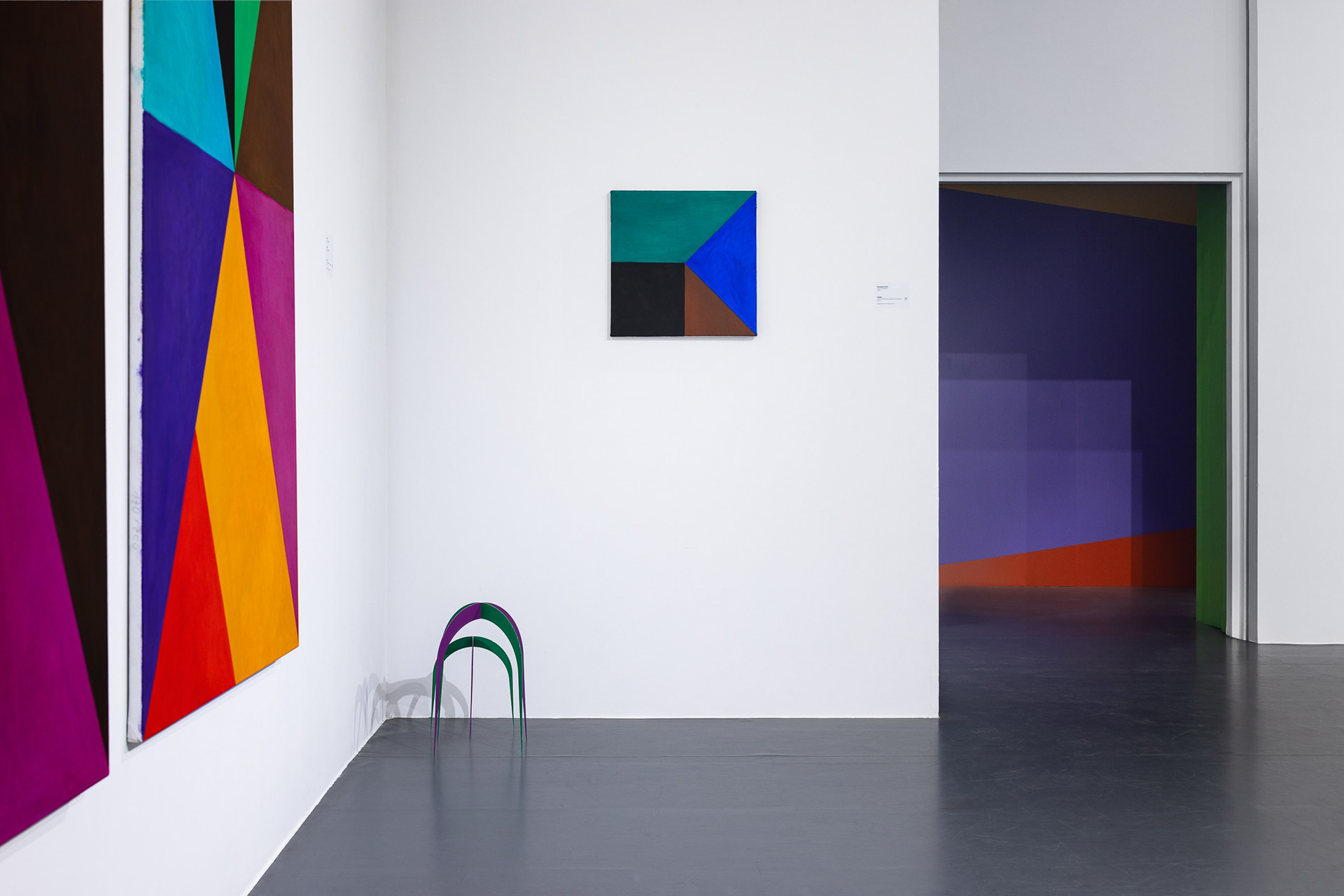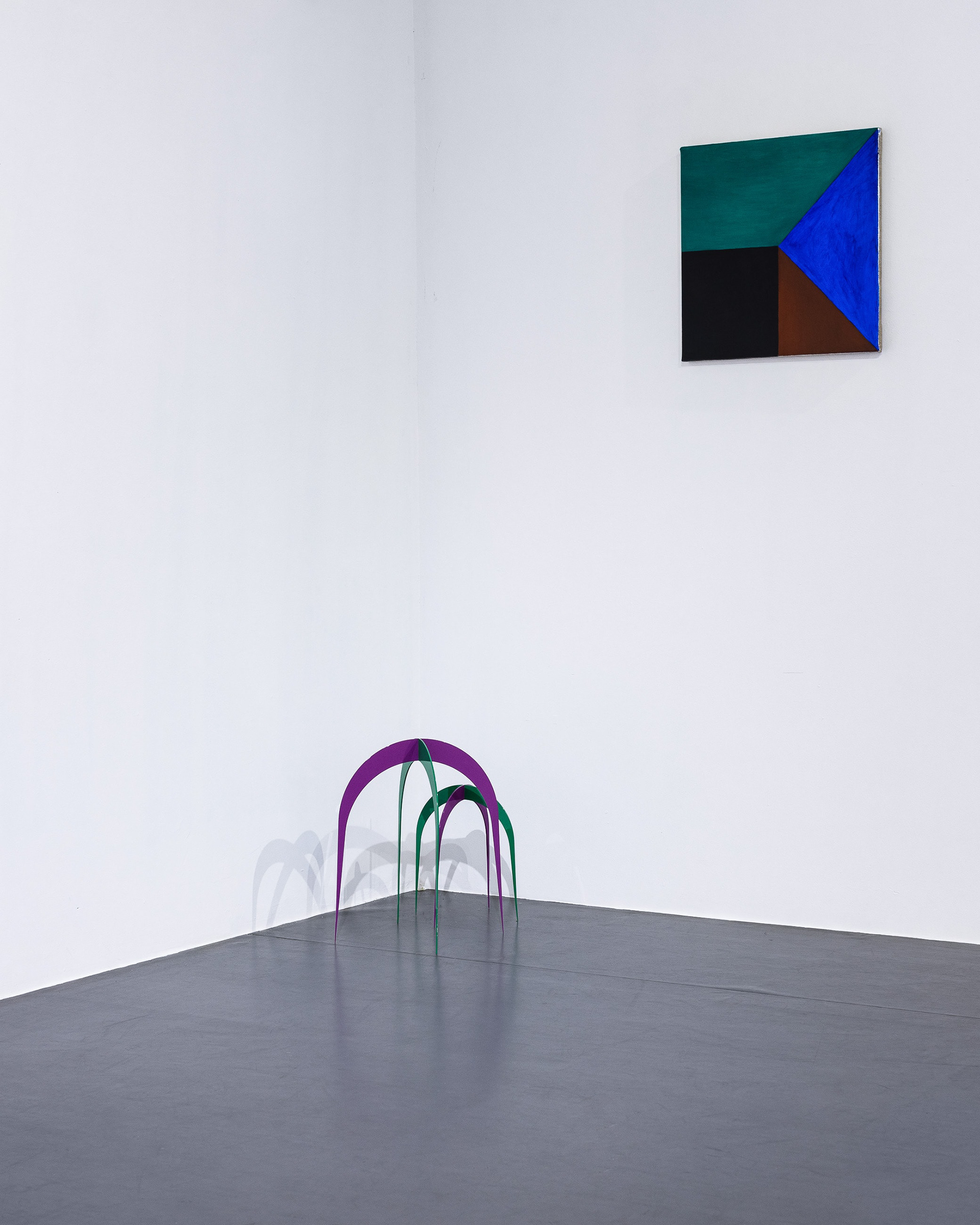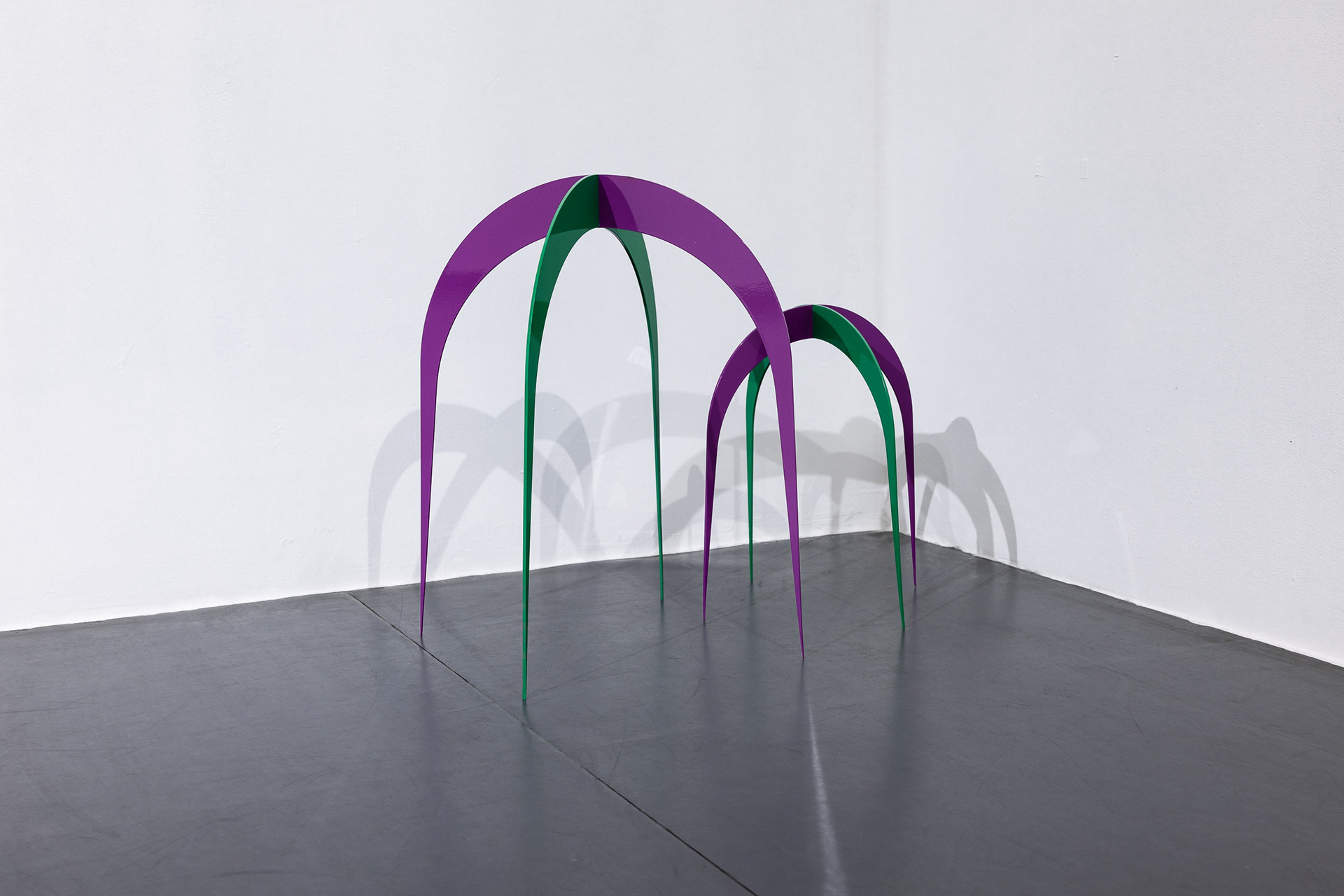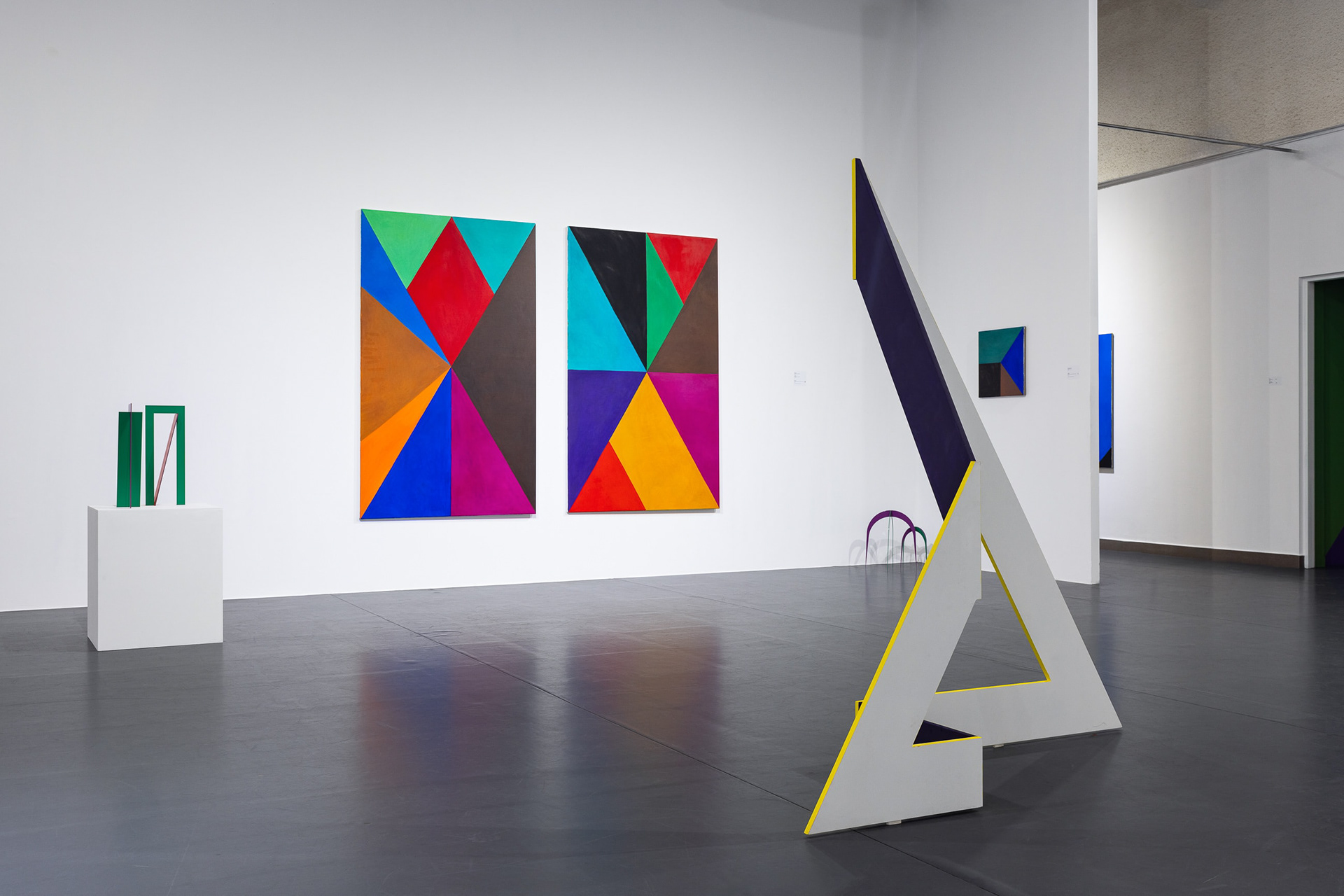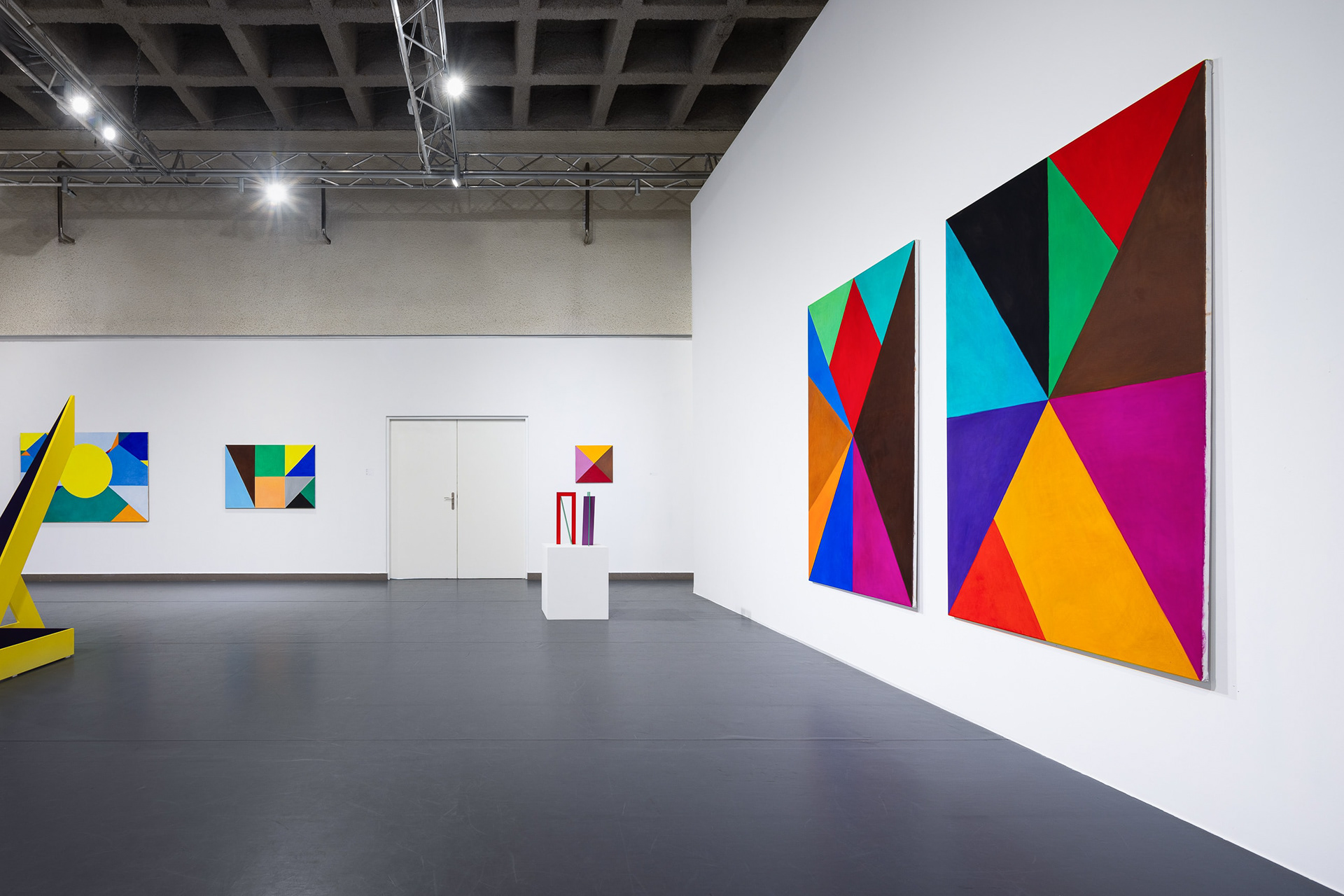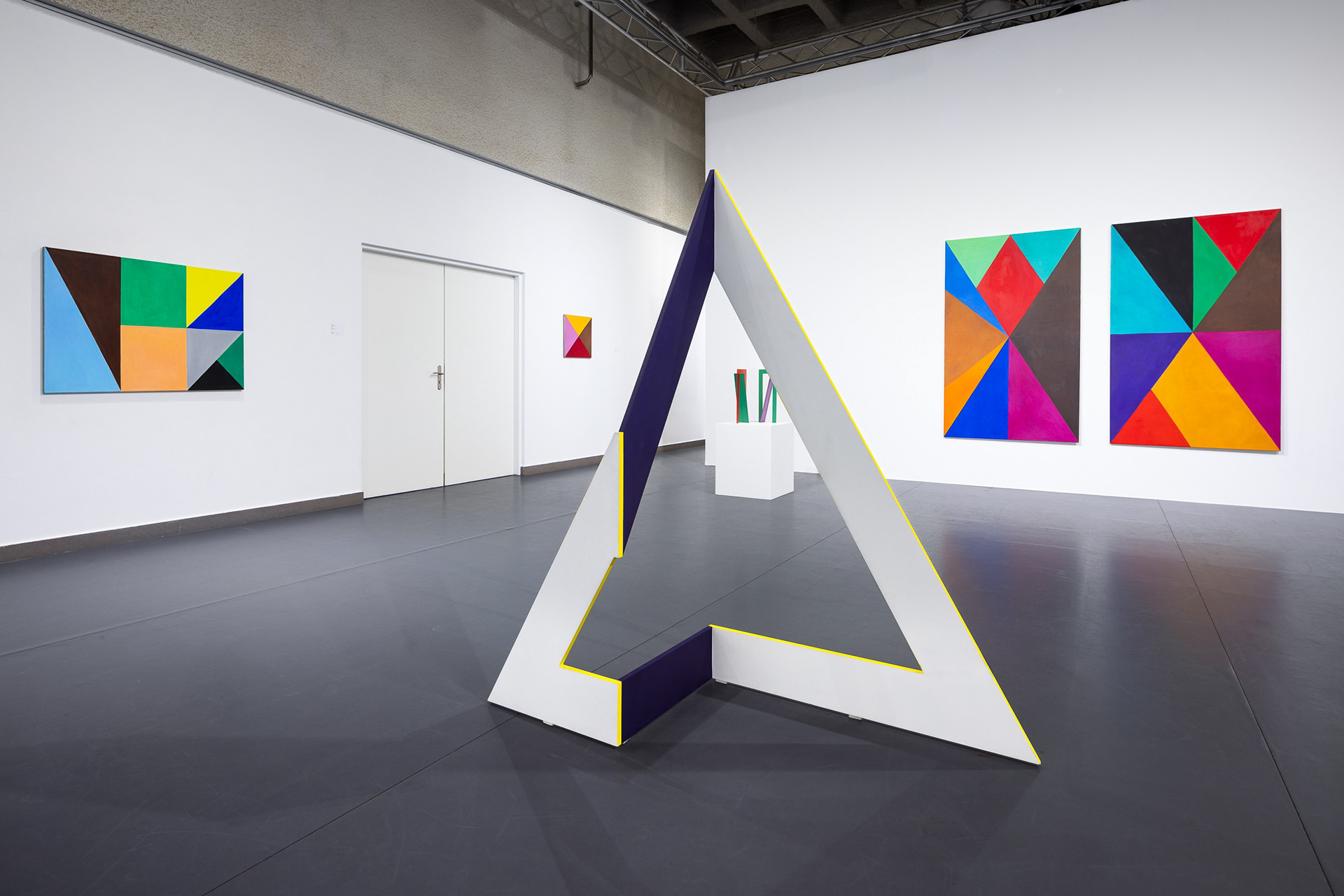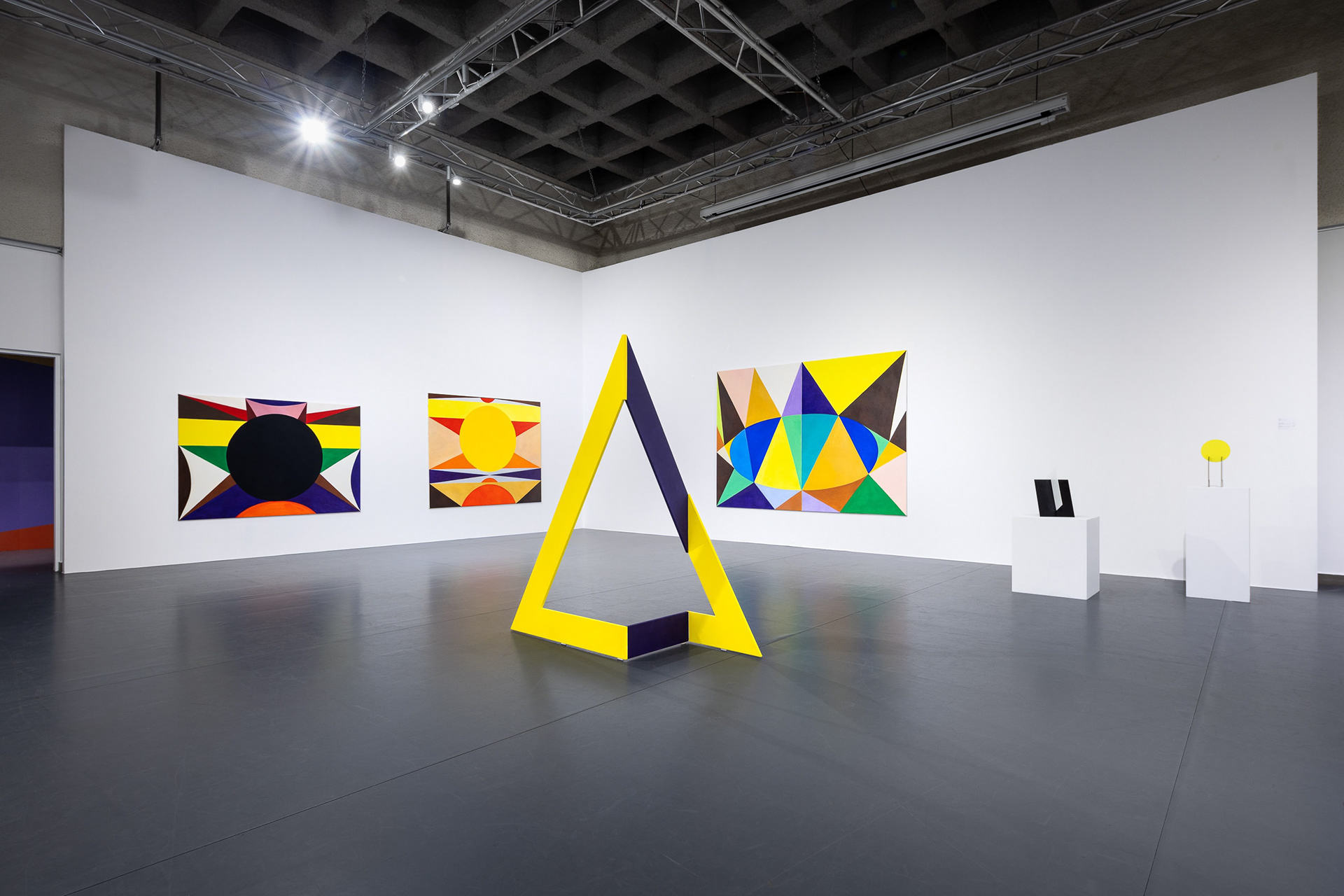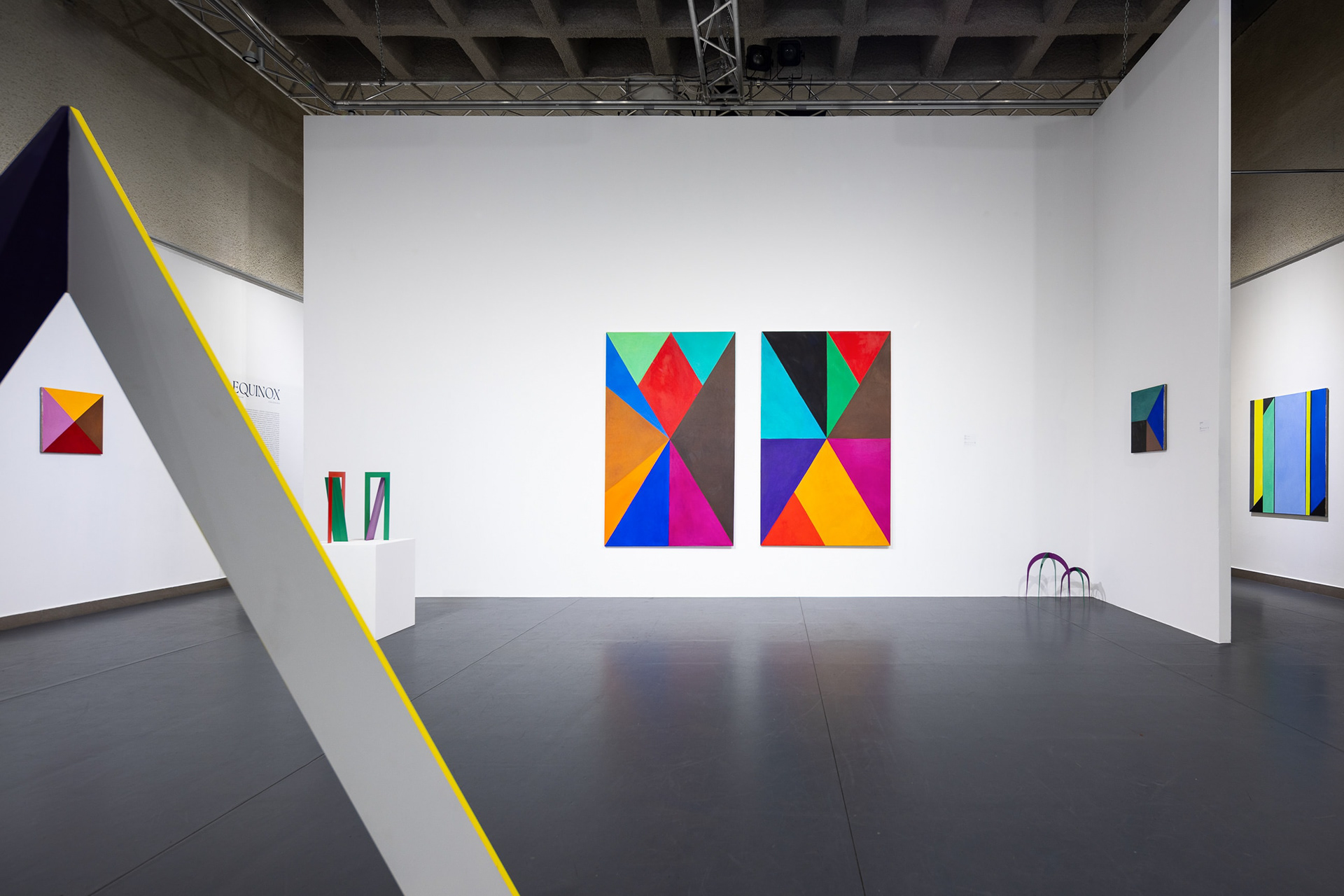Equinox
In the paintings and objects presented at the exhibition, Kinga Nowak addresses the search for harmony in a world in which order, balance and peace are disrupted at every turn. The “equinox” of the title thus metaphorically refers to the difficult moment of the solstice and, at the same time, the hope that it will be followed by a long-awaited rebirth of nature. References to nature are important to the artist, because although she uses the language of abstraction, it is her fascination with the landscape, its colours and light that is an important inspiration for her works. She is equally enthralled by the harsh landscape of the north and the sunny Mediterranean landscape, either experienced directly or viewed through an aeroplane window, as some of her abstract landscapes seem to be shot as if from a bird's eye view. In her search for the sources of Nowak's abstraction, the evocation of urban topographies also seems to have its justification. This is because she is fascinated by concepts associated with architecture: space, proportions, plans, decoration or the lack thereof, as well as by finished realisations.
Her painting practice also owes much to her openness to the impulses coming from design. She is therefore attracted to textile art, and is enchanted by ceramics, not only contemporary, but also those from centuries ago, the work of artists whose identities will never be known, and which she has had the opportunity to see while exploring museum collections in Poland and around the world. Nowak's abstract canvases could therefore easily be included in the Weaving Abstraction in Ancient and Modern Art (“Weaving Abstraction...”) exhibition currently taking place at New York's Metropolitan Museum, which associates works by artists from different eras and cultures, revealing the timelessness of their aesthetic choices and creative processes.
Her painting practice also owes much to her openness to the impulses coming from design. She is therefore attracted to textile art, and is enchanted by ceramics, not only contemporary, but also those from centuries ago, the work of artists whose identities will never be known, and which she has had the opportunity to see while exploring museum collections in Poland and around the world. Nowak's abstract canvases could therefore easily be included in the Weaving Abstraction in Ancient and Modern Art (“Weaving Abstraction...”) exhibition currently taking place at New York's Metropolitan Museum, which associates works by artists from different eras and cultures, revealing the timelessness of their aesthetic choices and creative processes.
The fact that the artist consciously draws on her broad cultural heritage does not exclude the topicality of her painting. Each time she stands in front of a blank canvas, she begins, as she says, to struggle with its composition, searching for the best formal and colouristic solutions. She focuses her attention primarily on the various aspects of colour: its hue, luminosity and saturation, bearing in mind that in order for colours to “sing” (a desire once expressed by Henri Matisse), their juxtaposition is most important. The colour contrasts she uses allow her to simultaneously, depending on the effect she wants to achieve: to bring out some geometric figures from the background or to blend others into the plane of the canvas. For she is aware that in abstract painting, as Stanley Whitney wants: space is in the colour.
Although the artist uses a geometric arrangement of forms and figures, her paintings do not give the impression of being “cold” or excessively “overworked”; on the contrary, the visible trace of her brushstrokes on them reveals the emotions that accompany her while painting.
Paradoxically, Kinga Nowak's abstract works, immersed in the world of recognisable objects and phenomena, yet processed and captured in a synthetic manner, are eloquent proof that the possibilities of non-figurative imagery are far from exhausted.
...................
Artist: Kinga Nowak
Curator: Agnieszka Jankowska-Marzec
BWA Tarnów | Tarnów, Poland
